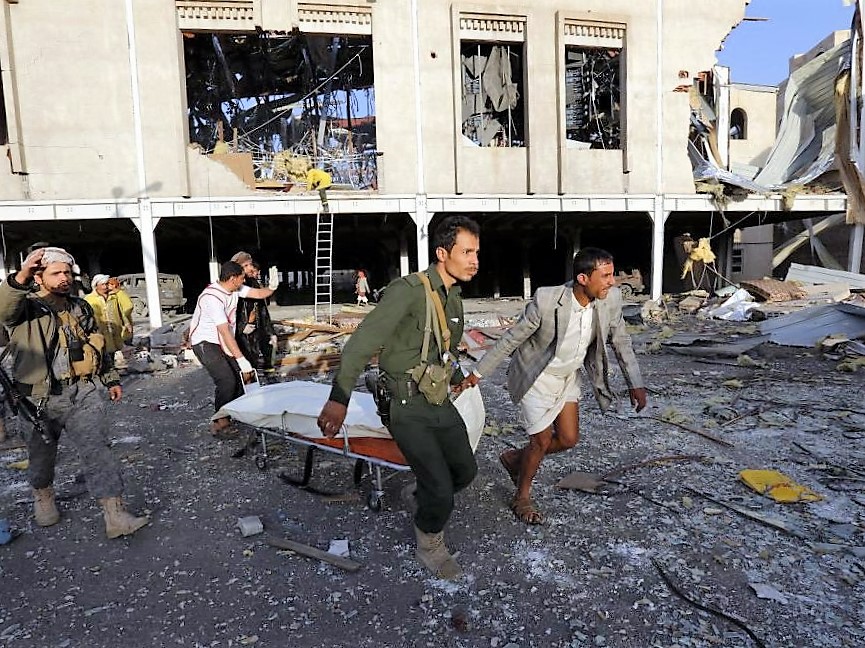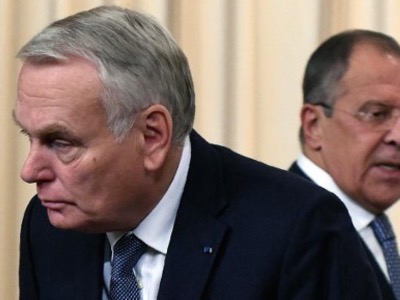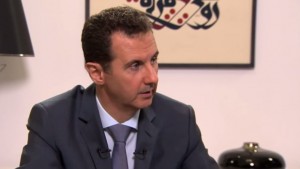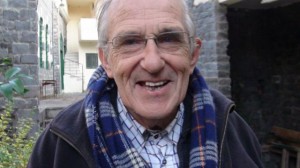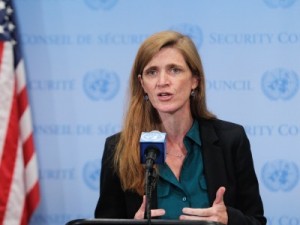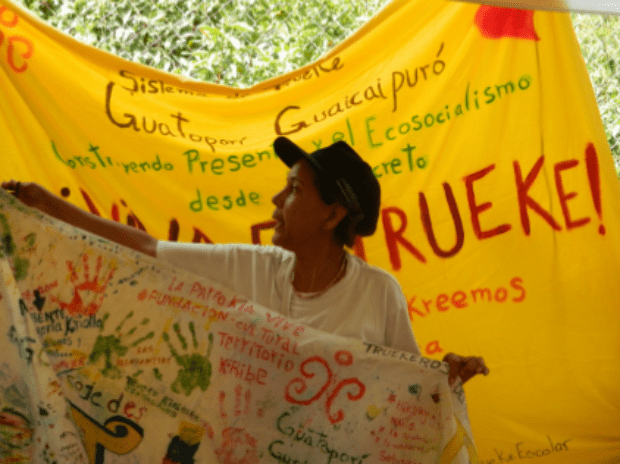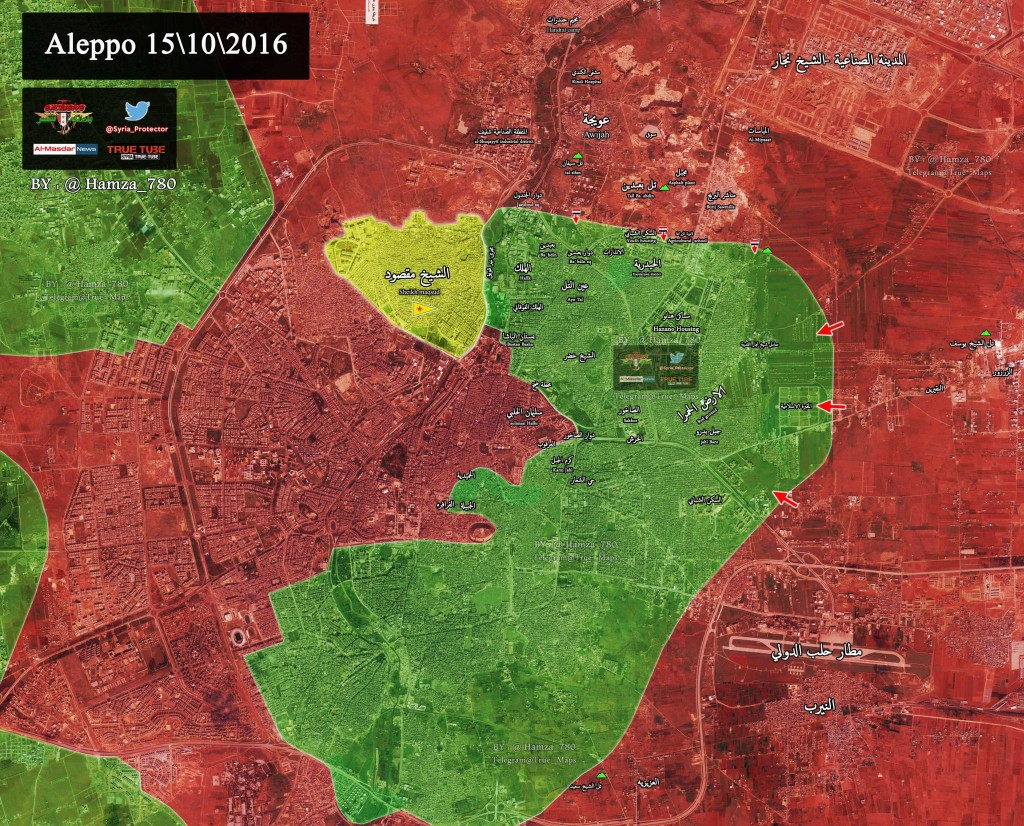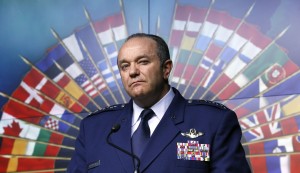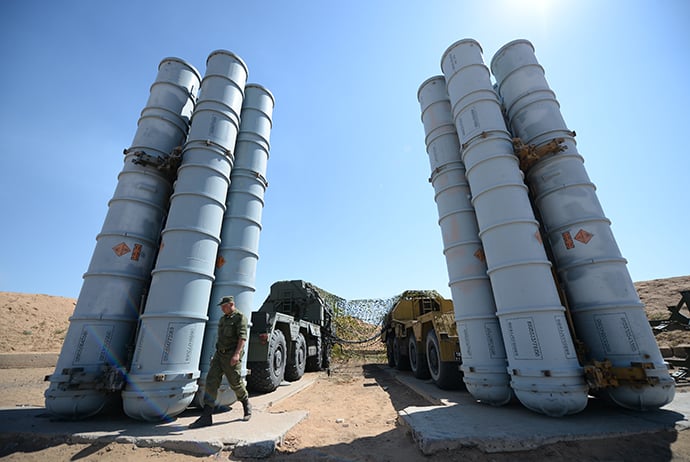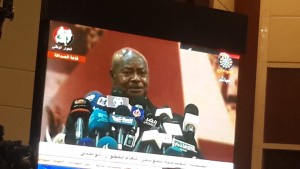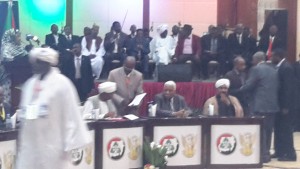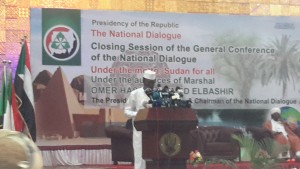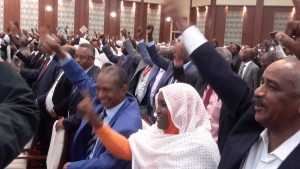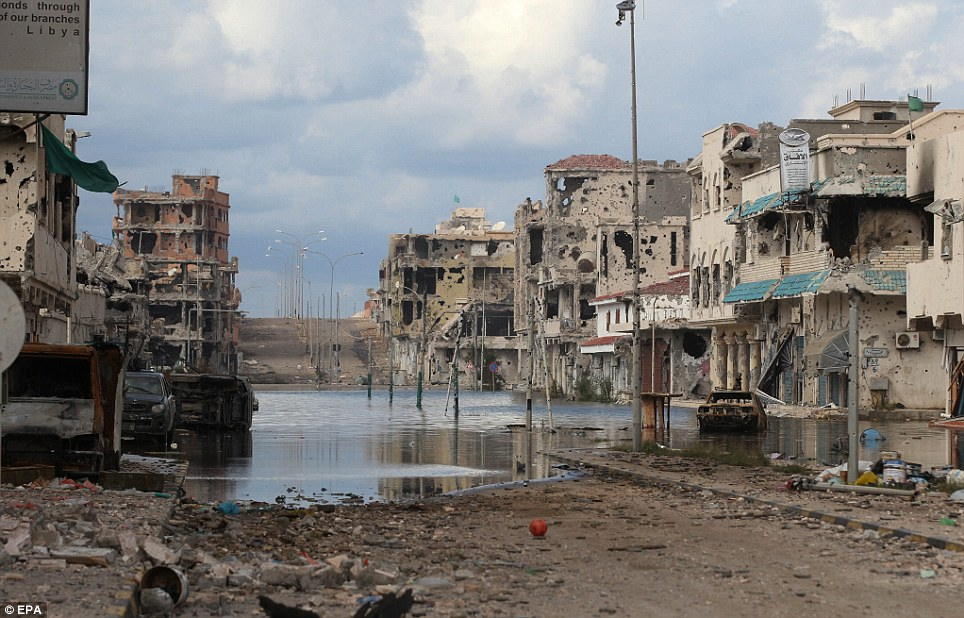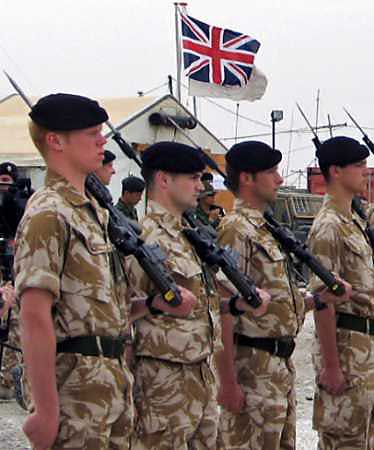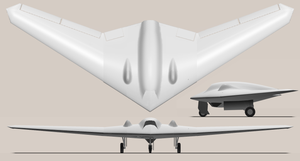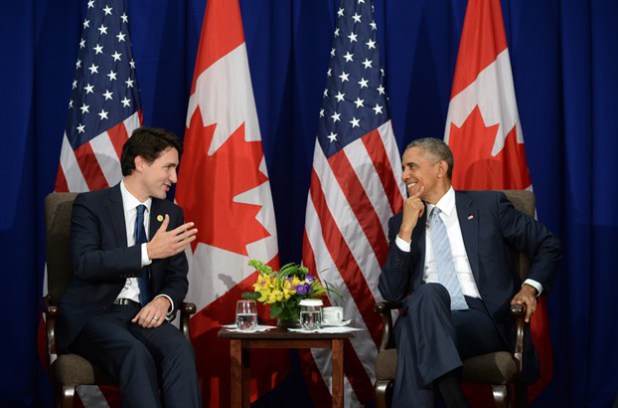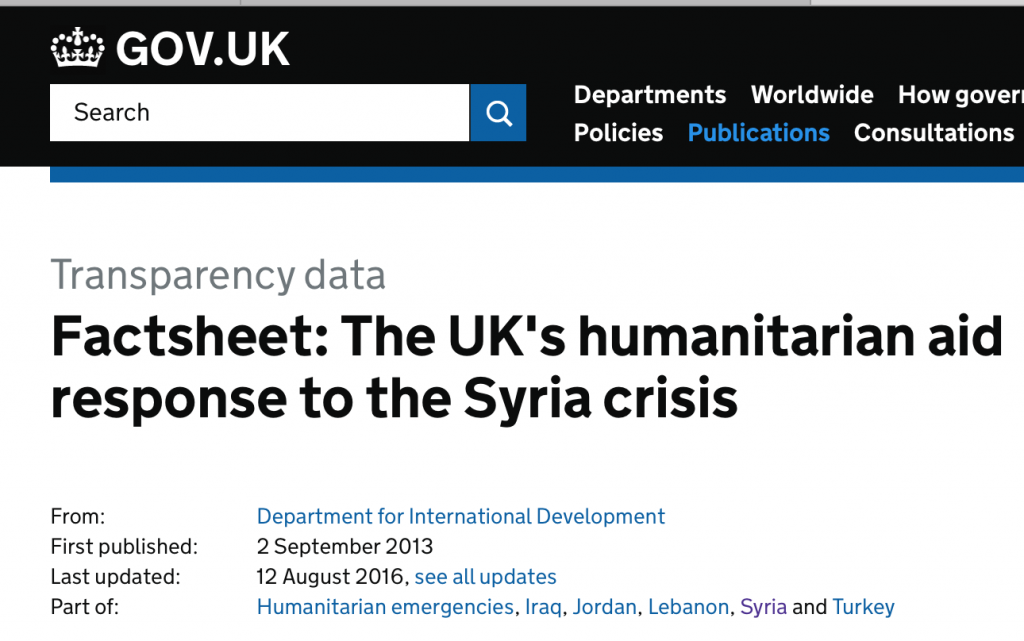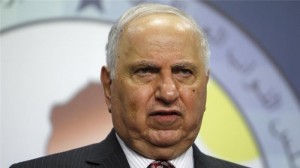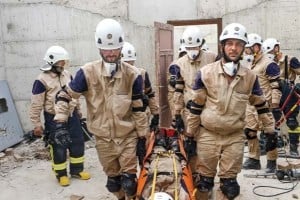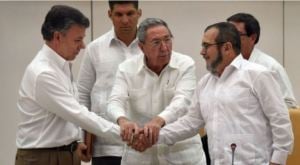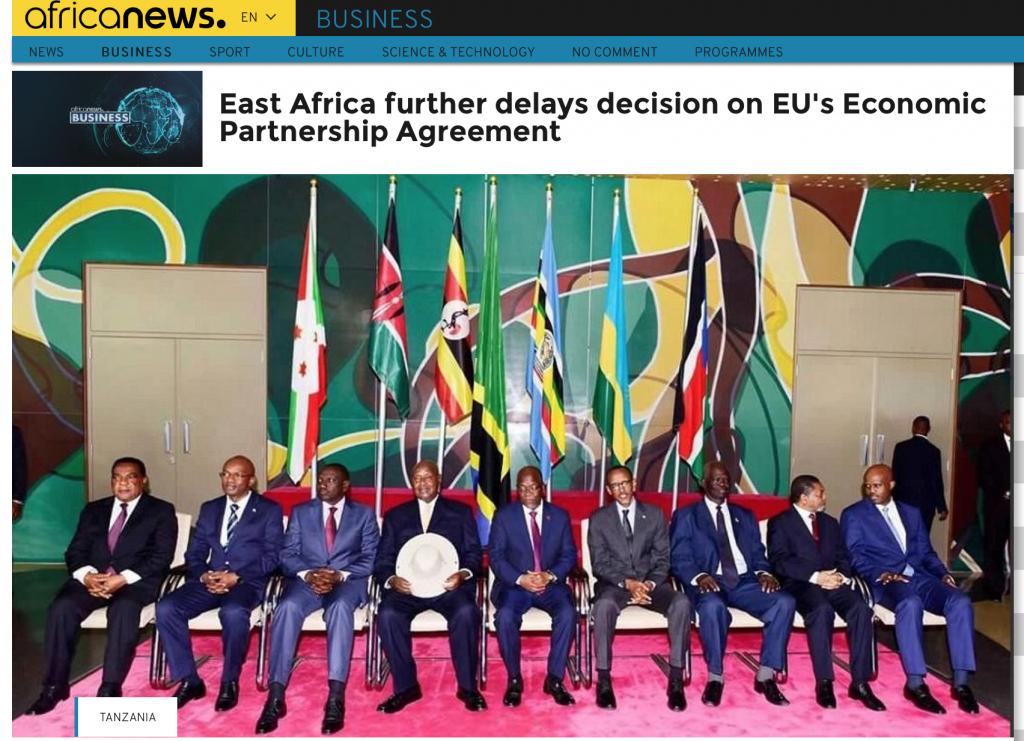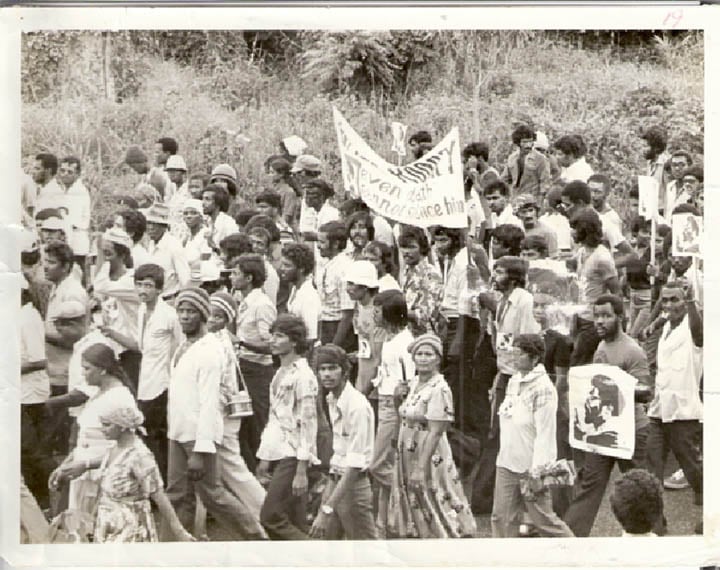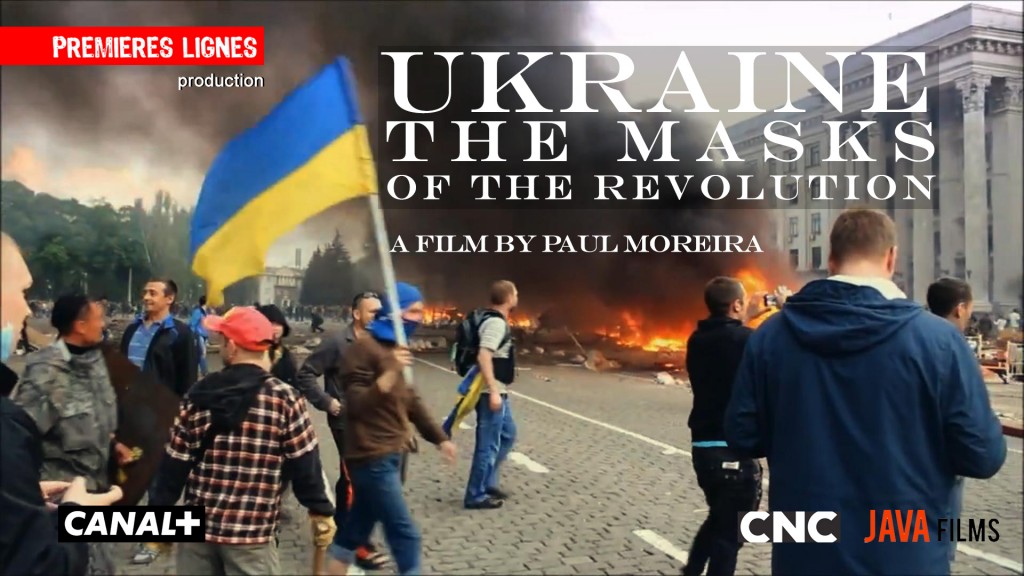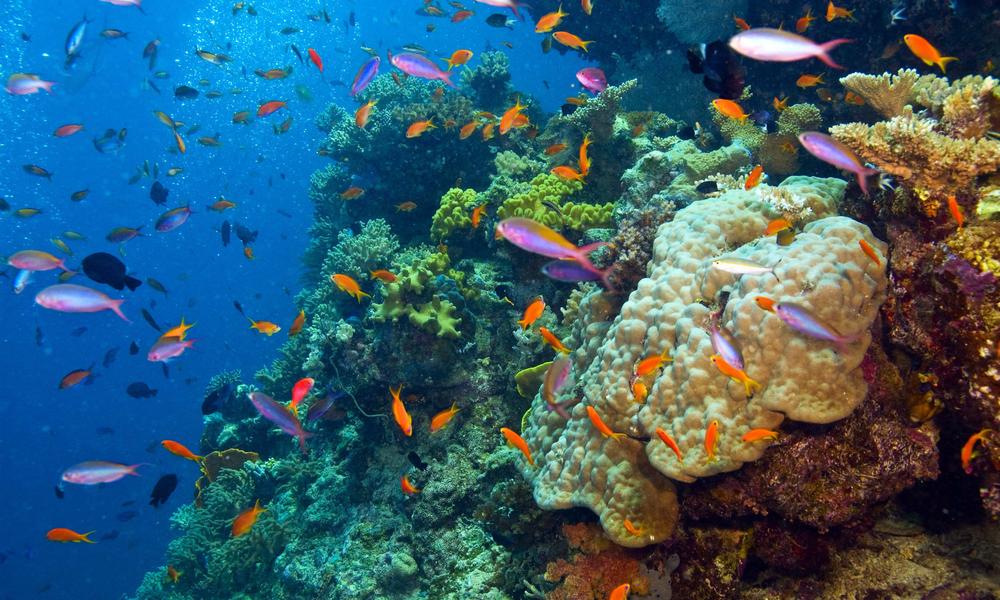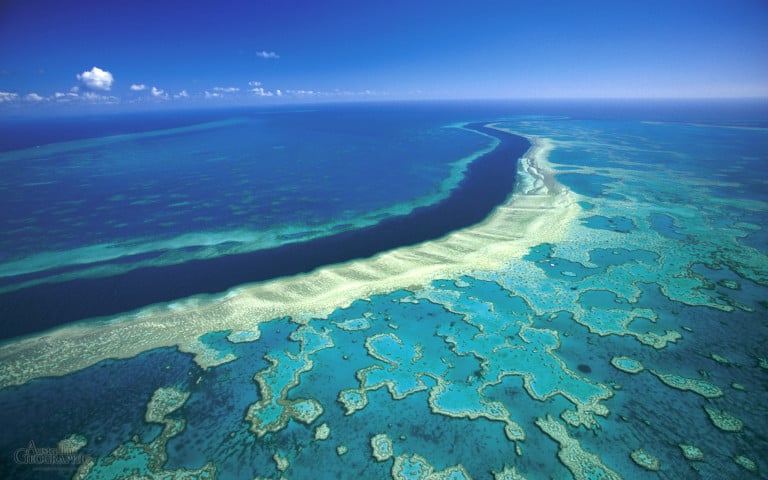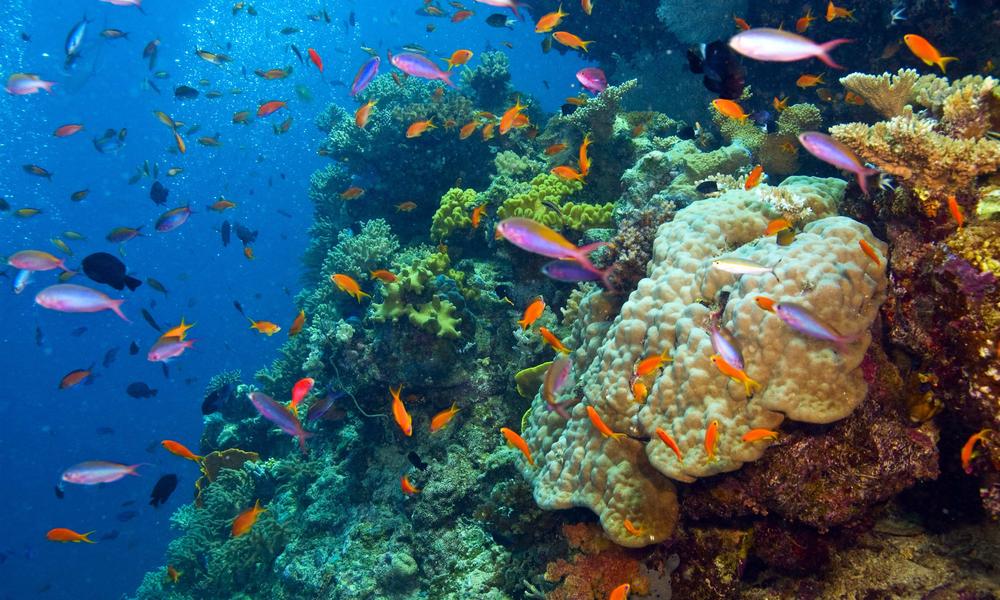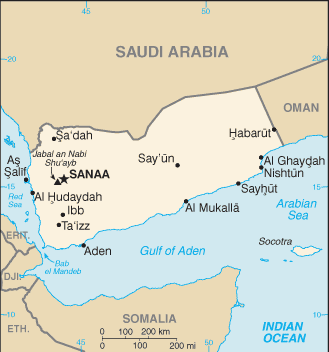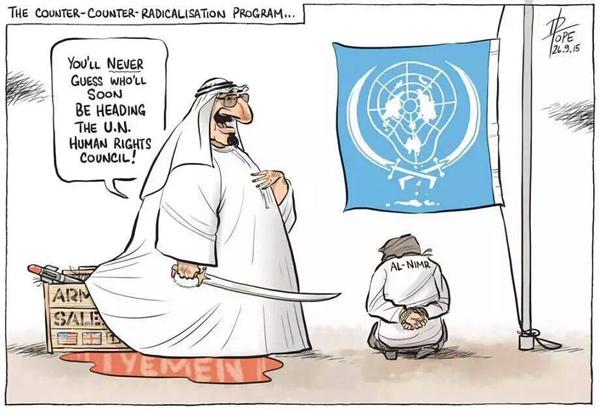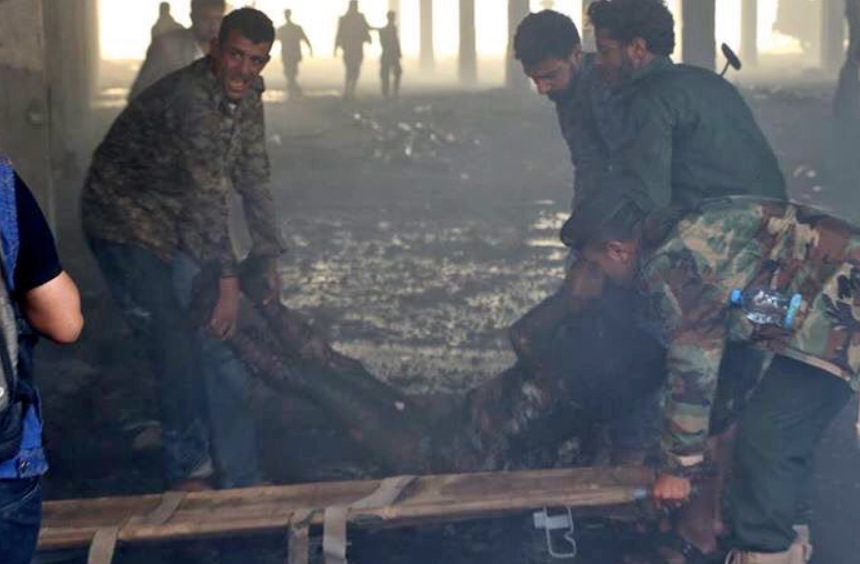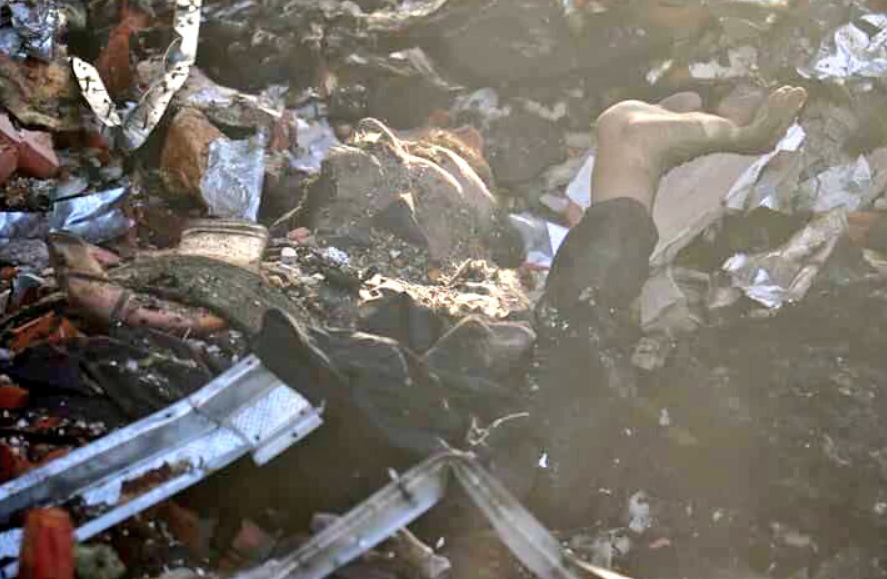Second, it’s about world war three. This term has been used recently a lot, especially after the recent escalation regarding the situation in Syria. I would say what we have now, what we’ve been seeing recently during the last few weeks and maybe few months is something like more than cold war, less than war, a full-blown war. I don’t know what to call it, but it’s not something that has existed recently, because I don’t think that the West and especially the United States has stopped their cold war, even after the collapse of the Soviet Union.
President Assad: You have many stages in that regard, and Syria is one of these important stages. You see more escalation than before, but the whole issue is about keeping the hegemony of the Americans around the world, not allowing anyone to be partner on the political or international arena, whether Russia or even their allies in the West. So, this is the essence of this war that you described as third world war that exists, it is a world war, but it’s not military war. Part of it is military, part of it is terrorism and security, and the other part is political. So, you’re correct, but in a different way, not only about Syria; Syria is part of this war.
Question 2: But you said… Syria became stage of this war. Why Syria? I mean, okay, you are big country, I mean, you have oil but not like Saudi Arabia. Why exactly Syria?
President Assad: It has many aspects. The first one, if you want to talk about the regional conflict, Syria has a good relation with Iran, and Saudi Arabia wanted to, let’s say, destroy Iran completely, maybe in the political sense and maybe in the material sense or factual sense, for different reasons. So they wanted Syria to go against Iran, that’s why destroying Syria could affect Iran negatively. That’s how I look at it. The West, for them, Syria and Russia are allies for decades now, and again, if we undermine the position of Syria, we can influence the Russians negatively. But there’s something else; it’s about the historical role of Syria. Syria has played that role in the region for centuries, it was always the hub of the geopolitical dynamic in the Middle East. So, controlling Syria – since the Pharaohs, before the Christ, they used to fight for Syria, the Pharaohs and the Hittites, this is historical basis. So, it has a role, geopolitics, the position on the Mediterranean, the society, because Syria is the fault line between the different cultures in this region; whatever happens in Syria will influence the region, negatively and positively, so controlling Syria is very important. Although Syria is small, it’s very important to control the rest of the region.
Second, Syria is an independent country, and the West doesn’t accept any independent country, whether Syria as a small country, or Russia as a great power. What’s their problem with Russia? Because you say “yes” and “no. You have to keep saying “yes.” That’s the problem with the West. So, that’s why Syria.
Question 3: Some Western media found that the war in Syria now became a straight conflict between Russia and USA. You agree with this?
President Assad: Yes, for a simple reason: when I said at the very beginning that the issue about the terrorism; Russia wanted to fight terrorism for different reasons, not only for Syria, not only for Russia, for the rest of the region, for Europe, for the rest of the world. They understand what the meaning of terrorism prevailing, in a certain way, while the United States have always, since Afghanistan in the early eighties, till this day, they think “terrorism is a card we can play. We can put on the table.”
Journalist: Yes.
President Assad: You can put in your pocket, and put it on the table anytime. So, you’re talking about two different entities, two different ideologies, two different behaviors, two different approaches. That’s natural to have this conflict; even if there is dialogue, they’re not on the same page.
Question 4: Now, we have a new player in this region. Okay, I mean, it was Turkish intervention, and nobody speaks about this now, like nothing happened. What’s your opinion about the role of Turkey in this war, and about this intervention?
President Assad: If we start from today, it’s invasion.
Journalist: Invasion!
President Assad: This incursion is invasion, whether a small part, or large part of the Syrian territory; it’s invasion, against international law, against the morals, against the sovereignty of Syria. But what do the Turks want from this invasion regardless of the mask that they wear to cover their intention, real intentions. They wanted to whitewash their real intention that they used to support ISIS and al-Nusra-
Journalist: You think they don’t support now?
President Assad: No, they still support, but they came, they say “we are fighting ISIS, we’re going to have-”
Journalist: It’s ridiculous. What they tell, it’s ridiculous, when they tell “we are fighting with ISIS.” They made ISIS.
President Assad: Of course, exactly, they made ISIS, they supported ISIS, they give them all the logistical support and they allow them to sell our oil through their borders, through their territory, with the participation of Erdogan’s son and his coterie; they all, all of them, were involved in the relation with ISIS. All the world knows this. But with this invasion, they wanted to change the package of ISIS, to talk about new moderate forces, which have the same grassroots of ISIS. They move it from ISIS. They say ISIS were defeated in some areas because the Turkish bombardment and troops and their proxies in Syria expelled ISIS from certain areas. Just a play, it’s just a play for the rest of the world. The second one, because he wanted to support al-Nusra in Syria.
Journalist: He wanted to support al-Nusra.
President Assad: And he wanted to have – I mean, Erdogan in particular – wanted to have a role in the solution in Syria, doesn’t matter what kind of role. He felt that he’s isolated for the last year because of ISIS.
Journalist: But he still feels like Syria is Ottoman Empire. For him it’s just his territory.
President Assad: Exactly. His ideology is a mixture between the Brotherhood ideology which is violent and extremist, and the Ottoman Empire, or Sultanate.
Journalist: Ambitions, yes.
President Assad: And so he thinks with these two ideologies, he can make a mixture to control this region. That’s why he supported the Muslim Brotherhood in every country, including Syria. You are right.
Question 5: After the Russian plane was shot down by the Turks, Russia stopped relationships with Turkey. Now, after, okay, his excuses, we again… it looks like again friendship, tourism, diplomatic relations everything. Putin called this a “knife in the back” when this plane was beaten by the Turks. Do you think maybe we Russians make a mistake to trust Erdogan again after his betrayal?
President Assad: No, actually, I look positively to this relation.
Journalist: You look positively?
President Assad: Yeah, positively. Why?
Journalist: Why?
President Assad: We are talking about two parties, we’re taking into consideration that these two parties, again, they don’t see eye-to-eye, they are in different positions; Russia bases its policy on the international law, respecting the sovereignty of other states, and understanding the repercussions of the terrorism prevailing anywhere in the world, while the other party, the Turkish party, bases his policy on the ideology of Muslim Brotherhood; they don’t respect the sovereignty of Syria, and they supported the terrorists. So, you can see there’s polarization, each one is in the exactly or completely the opposite side. So, through this rapprochement, let’s say, between Russia and Turkey, the only hope that we have as Syria is that Russia can make some changes in the Turkish policy. This is our hope, and I’m sure that this is the first goal of the Russian diplomacy toward Turkey these days; in order to decrease the damage of the messing-up with the Syrian territory by the Turkish government. I hope they can convince them that they have to stop supporting terrorists, stop allowing the flow of terrorists and money for those terrorists through their borders.
Journalist: But for Erdogan, these terrorists are instrument of influence. He will never refuse from this instrument, it’s his people, and if he will try to fight with them, they will start to fight with him. I mean, he… it’s a big risk for him to refuse from sponsorship of terrorism, it’s a big risk for his power.
President Assad: Yeah, that’s why I didn’t say the Russians will change his policy; I said they will decrease the damage, because he – I mean, somebody who belongs to the Muslim Brotherhood’s violent and extremist and fanatic ideology cannot be a straight person, to be frank, and to be realistic. So, what you’re talking about is very realistic. I agree with you a hundred percent. But at the end, you have to try, you try; if he changed one percent, that’s good, if he changed ten percent, then that’s good. You don’t have to have the full change, and we don’t have this hope, we don’t raise our expectations a lot, especially with somebody like Erdogan and his clique, but any change in this moment, that will be good, and this hope, that we have I think the same that the Russians officials have this time, through this relation. And I think this is the wisdom of the movement of the Russian government toward the Turkish government, not because they trust this government, but they need good relations with the people, and that’s completely correct.
Question 6: For me, it’s a very strange thing. Daesh, ISIS, with their ideology, never threaten Israel, and Israel never threaten Daesh, ISIS. It’s like some kind of agreement about – maybe not on friendship – but neutrality. Why, you think, it’s like this? And what’s the role of Israel in this war?
President Assad: Not only ISIS, of course, or Daesh, not only al-Nusra; anyone, any terrorist who holds a machinegun and started killing and destroying in Syria was supported by Israel, either indirectly through the logistical support on the frontier, or sometimes by direct intervention by Israel against Syria in different areas in Syria. Why? Because Israel is our enemy, because they occupy our lands, and they look at Syria as enemy of course, and for them they think if they undermine the position of Syria and make it weaker as a whole, as society, as army, as state, that will prevent Israel from moving toward the peace, and the price of the peace is to give back the Golan Heights to Syria. So, for them, Syria will be busy with another issue now, it would be busy to talk about the Golan or the peace process, or even to do anything to get back its land. That’s why Israel is supporting every terrorist, and there’s no contradiction between Israel and any organization like al-Nusra or ISIS or any Al Qaeda-linked organization.
Question 7: Your army lost a lot of blood, it’s obviously, but on the other side, when I sit in Damascus and see in cafes a lot of young people who drink coffee from morning, and ask “who are these young men, why are they not on the front?” It’s students, it’s students. After this I see fitness centers full of young people, is very good muscles. What are they doing here? Send them all on the front! I mean, I don’t understand why didn’t you make this general mobilization of army? Like, we made this in Patriotic War, in general, when we had big war, we sent all men to front!
President Assad: What we have now is partial, let’s say, mobilization. Why partial? What is the meaning of partial? It’s not the highest level. The highest level of mobilization means for everyone to go to fight, to different, let’s say, military fronts. It means you won’t have anyone at the universities, you won’t have teachers at schools, you won’t have employees to do anything, even the trucks, the cars, will be managed by the government, and anything else that would be part of this war. That would be okay if this war will last for a few weeks, or a few months maybe, but for a war that’s been there for now nearly six years, it means the paralysis of the society, and the paralysis of the state, and you won’t win the war if you have a paralyzed society. So, you need to have balance between the war and between the basic needs of the society, the university, and the services that you should offer to the people. That’s why it’s crucial to make that balance. So, that’s our point of view.
Question 8: But, even your TV programs, I don’t understand Arabic, but when I watch this, it’s like it’s peace in country, little bit from being in about war, and after this about sport, about children, about schools. I watch this and think “oh my God!” In country I hear how mines explosions in city, like nothing happened. Maybe it’s too much, maybe people… if you want to push patriotism in people, you must explain to them every day, “guys, we’re in big war!” And that’s exactly what every country is doing, but I don’t like this picture of peaceful life. It don’t exist here!
President Assad: Our, let’s say, media are not disconnected from what’s going on, but you need again to have the balance between how much you need to have close-to-natural life, not completely normal life…So you need this balance. Of course you have many different points of view regarding the media, because media is about the perception ..If you don’t try to live this life, the terrorists will defeat you, because that’s their aim.
Journalist: We was living like this, when it was Great Patriotic War, all cities was empty, it was just women. Okay, doctors of course, some kind of teachers, but everybody was in the front. I will give you example from my family: four brothers was going to front with my father, and my father left school, in thirteen years, he was going to factory to make bombs. And, it was not normal. We would never win this war if we will not put all our men on front.
President Assad: Yeah, but when you talk about war, war is not only military; war is everything. The most important part of our war, not only terrorists, which is in parallel, or as important as the terrorist issue, is the economy. We are under embargo, so we have to do our best to keep this wheel moving forward.
Journalist: I understood.
President Assad: That’s why you need to put all your effort on this life, because without this natural life, you cannot have economy, if everyone wants to stay at home and just to live the life of the war, you don’t produce.
Question 9: Why you ask help of Russia almost in the most critical moment? Almost when everything was crashed, and even your life was in danger?
President Assad: First of all, there’s a traditional relation between Syria and Russia, and during the worst times of this relation, after the collapse of the Soviet Union, the relation was good, it wasn’t bad. It wasn’t warm-
Journalist: That’s why you could ask help much more earlier.
President Assad: No, we asked for the help from the very beginning, but the escalation wasn’t as last year, because before that, the Syrian Army was moving forward, and our enemies – let’s put it in that term – our enemies, when they saw that we are moving forward on the ground, they started escalating by bringing more terrorists coming from abroad, more foreigners coming from more than one hundred countries. At the end, Syria is a small country, and even the population is not very big. So, we needed the help of our friends. Iran intervened, and Hezbollah, and Russia as a great power was very crucial in changing the balance of power on the ground. That’s why it was natural to ask for the Russian help. They helped us before; maybe not directly through the air forces, they used to send us everything, every logistical support we wanted for that war. But they live with us, we have the military experts living in Syria for four decades. They saw on the ground that during that time in 2014, the balance started changing in favor of the terrorists, with the support of the West and other countries like Saudi Arabia and Turkey and Qatar, and the Russians were ready to intervene directly. That’s why we invited them, and because we trust them, of course. We trust their politics, politics based on morals before interests. We trust them because we know that they wanted to support us because they wanted to get rid of the terrorists, not because they want to ask us anything in return, and they never did. Till this moment, they never asked us for anything in return. All these factors encouraged me and the Syrian government and the institutions to ask for the Russian help.
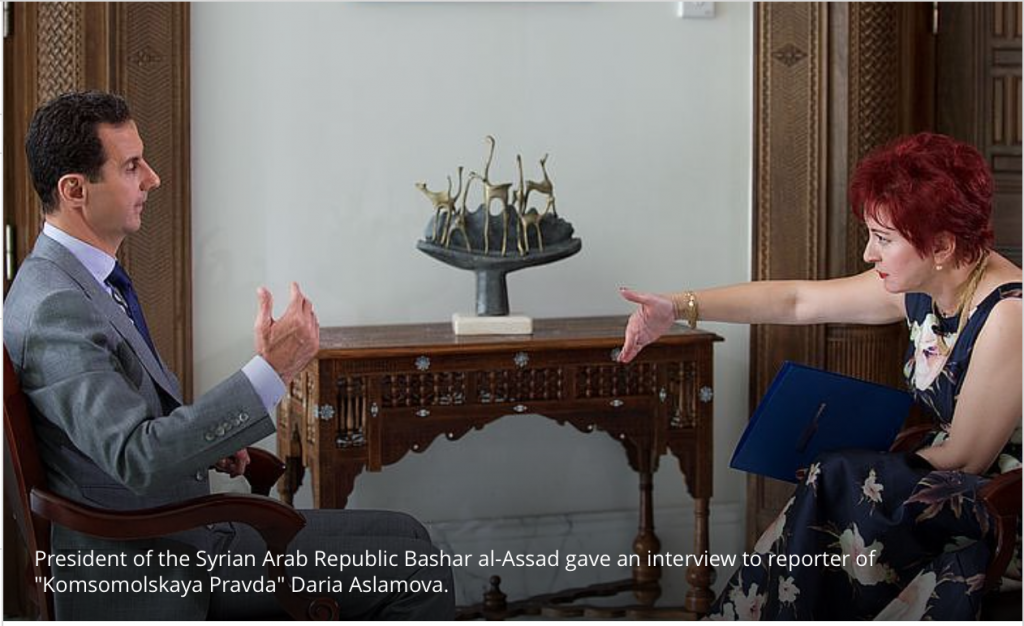
Question 10: Before this so-called revolution, I’m sure you got offers from your present enemies; some kind of offers, some kind of deals. What they wanted from you? I heard, for example, Qatar wanted to make tube through Syria. Is it true or not? You got some kind of offer before?
President Assad: The offers started after the crisis.
Journalist: Ah-ha, okay.
President Assad: Because they wanted to use the crisis; “if you do this, we’re going to help you.”
Journalist: But what they wanted from you?
President Assad: But before the crisis, it wasn’t an offer; they wanted to use Syria indirectly. Not offer, they wanted to convince us to do something. The main issue was, at that time around the world, was the nuclear file of Iran. It was the main issue around the world, and Syria has to convince Iran to go against its interests, that time. France tried, Saudi Arabia wanted us at that time to be away from Iran with no reason, just because they hate Iran.
Journalist: But what about this tube? It’s real that they wanted to make gas tube through Syria?
President Assad: No, they didn’t talk about it, but because Syria was supposed to be a hub in that regard, of power in general, a tube coming from the east; Iran, Iraq, Syria, Mediterranean, and another one from the Gulf toward Europe. I don’t think the West will accept Syria – this Syria, Syria’s that’s not puppet to the West – it’s not allowed to have this privilege or leverage, it’s not allowed. So, we think this is one of the factors that they didn’t talk about it directly. After the war, the offer was directly from the Saudis; that if you-
Journalist: Directly from who?
President Assad: From the Saudis.
Journalist: From Saudis.
President Assad: If you move away from Iran and you announce that you disconnect all kinds of relations with Iran, we’re going to help you. Very simple and very straight to the point.
Question 11: You said in one of your interviews that this war is difficult because it’s simple to kill terrorists, but to kill ideology, much more difficult. And when I was speaking on the front with your officers, they told “look, how to fight with man who is not afraid to die?” For him it’s just pleasure to die because 72 virgins wait for him in Paradise, yes. And our people, of course, normal people, they are afraid to die. And already it’s morale spirit not the same, much more higher… terrorists have much more higher morale spirit. How to kill this ideology?
President Assad: You’re correct. If you talk about those fighters, ideological fighters, or terrorists, let’s say, who are fighting our army, the only way is to fight them and kill them. You don’t have any other way. They are not ready for any dialogue, and you don’t have time to make dialogue, you want to protect your citizens, so you have to kill them. But that’s not enough; it’s like regenerating… like video games; you keep regenerating anything you want. You kill one, you’re going to have another ten, so there’s no end to that issue.
The most important thing is in the mid-term and in the long-term is to fight this ideology through similar but moderate ideology. I mean you cannot fight extremism in Islam with any other ideology but the moderate Islam. So, this is the only way, but it takes time, it takes young generations, to work on these young generations, to work on the means and to suffocate the money that’s being paid by the Saudi government and Saudi NGOs and Saudi institutions to promote the Wahabi ideology around the world. You cannot say “I’m going to fight this ideology” and at the same time allowing their sheikhs or imams promoting, at their madrasa, promoting this dark ideology. It’s impossible. And that’s what’s happening in Europe.
You’re talking about generations that lived there for generations now, the third or fourth generation living in Europe, but they send us terrorists from Europe now. They never lived in our region, they don’t speak Arabic, maybe they don’t read Quran, but they are extremists, because they allowed the Wahabi ideology to infiltrate Europe. So, we need to deal with many things; you have to deal with the media, how to deal with their strong media that’s being financed by the petrodollar in Saudi Arabia and other Gulf states to promote this extremism. How to deal with it? You need many aspects and many parallel paths at the same time. This is the only way you can defeat it. But dealing with the terrorists, this is the last part, and this is the compulsory part. You cannot avoid it, but it’s not the solution.
Question 12: Yes, but I always felt something mystic in this fighting for Damascus, and I understood after why there’s so many mercenaries come here. One professor of theology, Islamic theologist, explained to me that they really believe in the city “Dabiq,” it will be Apocalypse, and main battle between evil and good, and that’s why they’re now ready… because I was in Bosnia, for example; many mercenaries going through Bosnia, and they all tell “we are going to Dabiq.” For them it’s mystic meaning. How to kill this, I can’t imagine.
President Assad: Exactly, exactly.
Journalist: Because it’s big propaganda of this “go to Dabiq, go to Syria, because here it’s main place for Apocalypse!”
President Assad: A holy place now, for the fighting.
Journalist: Yes, it’s like a holy place.
President Assad: I mean, if you want to go to Paradise, you have to go through Syria. Maybe if you die somewhere else, you won’t go to paradise. This is part of the ideology. That’s why they-
Journalist: They are sure if they will die in Syria, they will go straight to Paradise?
President Assad: That’s how they think. Some of them, they think if they kill more innocents, they may have Iftar in Ramadan with the Prophet, for example. That’s how they believe. They wash their brains completely, so you cannot blame them, they are ignorant, most of them are teenagers, they’re being used.
Journalist: Yes, yes, sometimes children.
President Assad: Exactly. But it’s about the machine that’s been working for decades now to whitewash these brains and to spread this extremism around the Muslim world and the Muslim communities outside this Muslim world.
Question 13: Do you satisfy with results of Russian intervention for this last year? They really made something serious here?
President Assad: In brief, before that intervention, although there was this American alliance, so called “alliance” which is for me an elusive alliance, they did nothing, ISIS was expanding, ISIS and al-Nusra were expanding, they used to have more recruits, more recruitments. They used to have more oil to export through Turkey, and so on. After the Russian intervention, the same land under the control of the terrorists was shrinking. This is in brief. So, the reality is telling. Any other effect, I mean, is trivial. This is the main effect; they changed the balance on the ground not in favor of the terrorists.
Question 14: About Kurdish question, I was in Qamishli, and they want federation, they want to make federation. They said “our ideal model of state, it’s like Russia. Russia has many nationalities and they make Russian Federation. Why Syria cannot be a federation?” And honestly, nobody from Syrian Kurdish was speaking with me about separation or to make independent state. No, they told “we want to be in Syria, but we want autonomy.” You agree with this or not? Because they are really good fighters against ISIS.
President Assad: Let me clarify the different aspects of this issue. First of all, we cannot talk about a community, a full community in Syria, that it wants something, like talking about the Kurds or the Turks or the Arabs or the Chechens or the Armenians or any other community we have. So, we can talk about part of the Kurds that they need this, part, only part of them. The majority of them, no, they don’t ask for it. They never-
Journalist: I don’t speak about the Kurds in Damascus, of course they live here.
President Assad: Yeah, I mean even in the north, part of them talk about this. This is first. Second, when you talk about federalism or any other similar system, it should be part of the constitution, and the constitution is not owned by the government – the constitution reflects the will of the Syrian people. So, if they need to have a certain political system in Syria, they need to promote it among the Syrians. They cannot discuss it with me, even if I say “yes, that’s a good idea, I don’t mind” as President or as an official or as a government. I cannot give it to them, I don’t own it, I don’t own the political system in Syria. Everything should be-
Journalist: Like a referendum!
President Assad: Exactly, to have referendum by the Syrian people to say yes or no. Second, some people, they talk about Kurdish federalism in the north, regardless of what I talked about, about most of the Kurds that they don’t ask for this. Even if you want it, the majority in that area are Arabs. So how can you have Kurdish federalism while you have majority of Arabs?
Journalist: But you have contacts with them?
President Assad: Yeah, of course. We have dealing, we have negotiation, we always-
Journalist: You have negotiations with them?
President Assad: Of course, always, and we supported them during the war against ISIS. We sent them armaments, and your army knows all these details.
Question 15: But honestly, when I was traveling by your country, I don’t see any kind of opposition without guns, I mean, with whom you can speak? You have real partners for negotiations, or it is mission impossible?
President Assad: This is a very important question, but you have to define the word “opposition.” Now, most of the world used the word “opposition” about people who carry guns and kill people. You don’t call them opposition; “opposition” is a political term; it cannot be a military term.
Journalist: Yes, this is the problem, but everybody has guns. With who to speak?
President Assad: Exactly. Now, if you want to talk about political opposition, of course we have. We have figures, I don’t have names now, but we have figures. You can search for names. You have political currents or political movements-
Journalist: Which one? What are the names of this…?
President Assad: You have new parties, we can get you names, we have so many, I mean, not all of them have seats in the Parliament, for example, but during the crisis and even before the crisis, you have so many. We can bring you a list for all these, we have them. You have new parties who announce themselves as oppositions recently. Again, we can give you a list of all these, if I don’t want to mention which name, I can give you the list. But we have them now, but the question here if you want to make negotiation, that’s the crucial point of your question, it’s not about who I am going to make negotiations with; the question is about who is influential on the situation, who can change the situation?
Now, If I am going to sit with all these oppositions, whether inside Syria or outside Syria, whether they are real patriotic oppositions or opposition related to other countries, not to the Syrian people, let’s presume that we are sitting with them, and we agreed upon anything, we said “this is good for the future of Syria.” The question is: who is going to influence the terrorists on the ground? We all know that the majority of those terrorists belonging to Al Qaeda-affiliated groups, ISIS, al-Nusra, Ahrar al-Cham, and other organizations. They don’t belong to any political movement, they don’t care about any ideology but their own ideology, the Wahhabi Ideology. So, even if we negotiate with the political opposition, we cannot change the situation. So that’s the most important part of the problem. So, you are correct; who I’m going to deal with?
Journalist: Yes, with whom?
President Assad: The most important is who’s going to change the situation with me? As a government, I have my means. We can change. We are fighting terrorists. What those oppositions can do? That’s the question. I cannot answer it. They have to answer it. They have to say “we can do this and we can do that.”
Question 16: All Western media take information about the situation in Syria from this strange organization “Syrian Observatory of Human Rights,” but I understood that it’s just a one-man band?
President Assad: One man living in London.
Journalist: I don’t understand this. I was shocked when I knew, I mean how they can use this like a source of information?
President Assad: Yes, because that’s what the West wants; they don’t need anything real. They need somebody to promote any information that suit their agenda, and they promote it as a real one, as a fact, and as you know now, most of the people in the West are brainwashed regarding what’s going on in Syria, and may be in Ukraine, I mean, the same in Russia; they tried to – and they succeeded – and brainwashed their public opinion, and this is one of the tools. So, it’s not the only one, they have many tools, similar tools like the White Helmets recently.
Journalist: What is… Who are they?
President Assad: Actually, they work with al-Nusra in the area that’s controlled by al-Nusra. How can you work in the same area if you are not under the control of al-Nusra? More importantly, many of their members – there are videos and pictures of them celebrating the death of Syrian Army soldiers, they were celebrating on their bodies-
Journalist: What was… not long time ago, you mean when America was bombing Syrian Army, you mean this case?
President Assad: No, no, in different areas, in Aleppo.
Journalist: In different areas.
President Assad: In Aleppo, you had fights, and they pictured themselves over the bodies of Syrian soldiers, the White Helmets with al-Nusra. So, this is changing of the package of al-Nusra under the word or under the title of White Helmet, that they are the good people who are sacrificing their life to help the others and children, and this emotional picture that would affect the public opinion in the West.
Journalist: And you even don’t know from where these pictures are?
President Assad: Sorry?
Journalist: Nobody knows from where these pictures?
President Assad: No, no, they don’t verify anything, it’s not important. Now, in the internet, you can find anything, you cannot verify anything on the internet. You just watch, you feel emotional because the picture in Syria it should be in black and white; the good people versus the bad army or the bad President or bad government or the bad officials, let’s say. This is the only picture they wanted to have in order to convince their public opinion that we should continue pressuring, that they are supporting the good Syrian people against their bad government, and so on. You know this propaganda.
Question 17: But what will give you liberation of Aleppo, in strategic point?
President Assad: Aleppo, we call it the “twin of Damascus” for many reasons. It is the second big city in Syria, Damascus is the political capital, while actually Aleppo is the industrial capital in Syria.
Journalist: But no industry now, and I was there, everything is crashed.
President Assad: Exactly. Most of the factories in Aleppo, they don’t work; they were stolen, they were taken to Turkey.
Journalist: But if you will take Aleppo, what will it change in the war?
President Assad: Because it is the second-
Journalist: Second city, but you can cut al-Nusra from-
President Assad: First of all, it has political gain, on the strategic level, political gain and national gain. Then, from the strategic point of view, military point of view, no, you don’t cut; it’s going to be the springboard, as a big city, to move to another areas, to liberate another areas from the terrorists. This is the importance of Aleppo now.
Journalist: Okay, it’s liberation, but what’s your next step? How to cut this connection between Turkey and Idlib? Because this is the main source, main stream of money, soldiers, everything.
President Assad: You cannot cut, because Idlib is adjacent to Turkey, it’s right on the Syrian-Turkish borders. So you cannot cut; you have to clean. You have to keep cleaning this area and to push the terrorists to Turkey to go back to where they come from, or to kill them. There’s no other option. But Aleppo is going to be a very important springboard to do this move.
Question 18: How many foreign mercenaries passed through your country for the last five years, approximately?
President Assad: No one can count, because we don’t have regular borders now; they don’t cross the borders regularly, of course, but the estimation through one of the German research centers that was published a few weeks ago, they talk about hundreds of thousands of terrorists.
Journalist: Hundreds of thousands?
President Assad: Hundreds of thousands. They talk about more than 300 thousand, which is, I don’t know if-
Journalist: More than 300 thousands?
President Assad: Yeah. I don’t know if it’s correct or not, or precise or wrong, but if you talk about hundreds of thousands, even if you talk about one hundred, it’s a full army. It’s a full army.
Journalist: It’s an army. It’s a full army.
President Assad: Exactly. That’s why you keep killing, but you still have recruitment coming from abroad. So, you’re talking about hundreds of thousands coming from different areas in the world, and this is very realistic; you have hundreds of thousands of terrorists around the world having the same ideology, the Wahhabi Ideology. That’s very realistic. This is not an exaggeration.
Question 19: I was speaking with your opposition in 2012 in Istanbul, with young people who told me “we want human rights, we want human rights.” It was secular normal people without beard who were, by the way, drinking beer in Ramadan. But just for few years, they became fanatics. This is strange for me, and there was completely secular. And, who is commanders in Daesh, in ISIS? It’s ex… ex-colonels, ex-majors from army of Saddam Hussein. They’re secular people, too. How this become army of fanatics? I don’t understand.
President Assad: Part of it is related to what happened in Iraq after the invasion in 2003, where the American army or the Americans in general control everything in Iraq, including the prisons, and the leader of ISIS and most of his entourage were in the same prison. So, ISIS was created in Iraq under the American supervision.
Journalist: It was maybe not ISIS, this period, but Al Qaeda?
President Assad: No, it was called IS, it wasn’t ISIS. It was “Islamic State of Iraq.”
Journalist: Islamic State?
President Assad: Because it wasn’t in Syria at that time. That’s why it was called IS. That was in 2006.
Journalist: 2006?
President Assad: 2006, of course.
Journalist: Already, it was Islamic State in 2006?
President Assad: Of course. In 2006, of course, before the withdrawal of the Americans. That’s why they played either direct role or indirect role in creating ISIS. Now, when it comes to Syria, when you talk about the very beginning of the problem before anybody was talking about al-Nusra or ISIS, they called it “Free Army” as a secular power fighting the government and the army. Actually, from the very beginning, if you go back to the internet and you have videos, you have pictures, you have everything, the beheading started from the very first few weeks. So, from the very, very beginning, it was an extremist movement, but they called it “Free Army.” But when it becomes bigger and bigger, and the beheading couldn’t be hidden anymore, they had to confess that there is al-Nusra, but actually it’s the same one; al-Nusra is the same one as the “Free Syrian Army,” the same as the ISIS. You have the same grassroots moving from area to area for different reasons. One of them is the ideology, the other one is out of fear, because if they don’t move from place to place, they may kill you. Third one, for the money. ISIS used to give highest salaries for a certain time, one year ago, two years ago, and before, so many of the al-Nusra and “Free Syrian Army” joined ISIS for the money. So, you have many different factors, but the basic-
Journalist: But, fanaticism?
President Assad: But the same basic, the same foundation of extremism, is the common thing between all these different names and organizations.
Question 20: Can I ask you a personal question?
President Assad: Yeah, of course.
Journalist: In 2013, when your life was in so big danger, when America already… almost started to bomb Syria, why you didn’t send your family to a safe place?
President Assad: How can you convince the Syrians to stay in their country while you ask your family to leave your country? You cannot. You have to be the first, in any term used regarding the patriotic, let’s say, headline. You have to be the first as a President; you, your family, anyone around you in the government, your staff. You cannot convince the people in your country that you can defend your country while you don’t trust your army to defend your family. So, that’s-
Journalist: I understood, I understood.
President Assad: That’s why it was natural. We never thought… I never thought about this, actually.
Journalist: Thank you very much for the interview.
President Assad: Thank you for coming to Syria.




